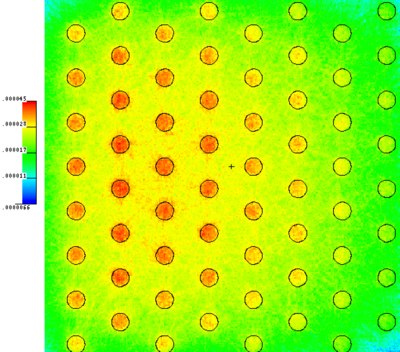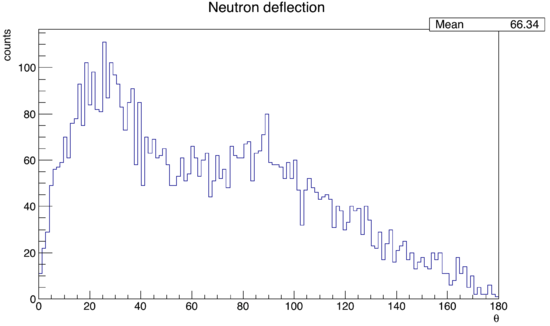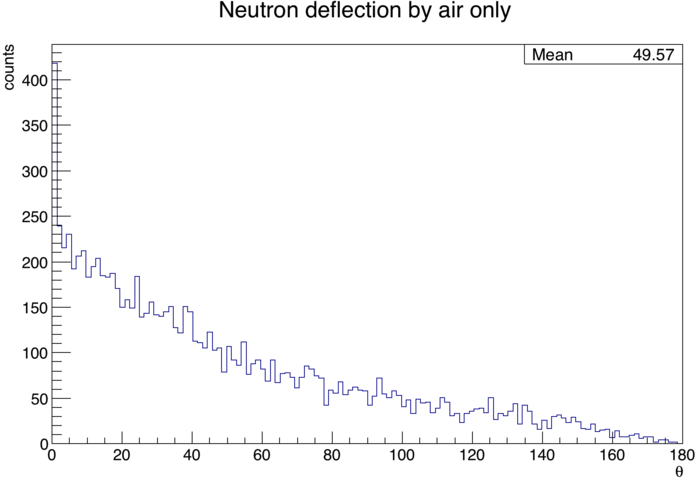Difference between revisions of "Neutron pinball"
| Line 11: | Line 11: | ||
==Effect of room air== | ==Effect of room air== | ||
| − | As mentioned above, ~2% of neutrons were scattered in the air. Below is a histogram of neutron deflection angles when neutron-thorium interaction was turned off. | + | As mentioned above, ~2% of neutrons were scattered in the air. Below is a histogram of neutron deflection angles, as seen by the detector, when neutron-thorium interaction was turned off. |
[[File:AirDeflection.png|700 px|thumb|center]] | [[File:AirDeflection.png|700 px|thumb|center]] | ||
Revision as of 02:01, 30 January 2016
The Simulation
Photons with a Bremsstrahlung energy distribution are incident upon 64 thorium cylindrical targets. All thorium targets have 1 cm center-to-center spacing, a dia. of 0.4 cm, and a height of 8 cm. The target geometry is shown in the neutron flux plot below. The targets are surrounded by a cylindrical room filled with air, which is given a radius equal to the distance between the target and the detectors (150 cm), and a height equal to the vertical extent of the detectors (76 cm). . Upon the creation of a neutron, its initial direction of travel is logged and compared with the direction of travel as seen by a detector placed 150 cm away from the target.
Results
12% of neutrons scattered in the thorium cylinders alone, and 14% scattered when air was included. The histogram below shows that if a neutron did scatter, it most likely did so at an unacceptable angle.
Effect of room air
As mentioned above, ~2% of neutrons were scattered in the air. Below is a histogram of neutron deflection angles, as seen by the detector, when neutron-thorium interaction was turned off.
Go back Elastic scattering


